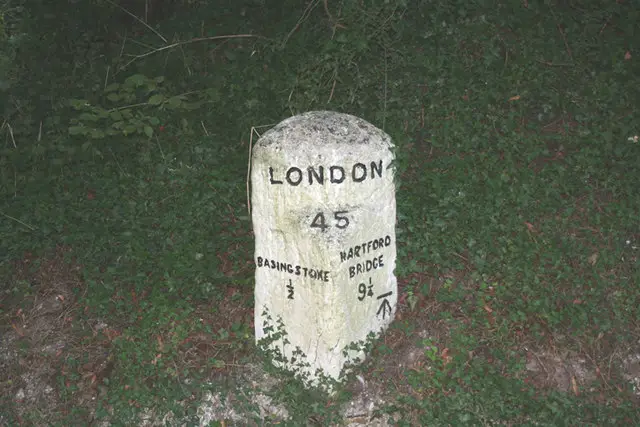Jonathan Dodd’s latest column. Guest opinion articles do not necessarily reflect the views of the publication. Ed
I recall, as a child, being entranced by the milestones you used to be able to see alongside the roads whenever we drove anywhere. I used to sit on the leather seats in the back of our car, sliding around and being told to sit still. There weren’t seatbelts then, and back seats were usually flat and slippery and hard and uncontoured, so you didn’t sink in to prearranged bottom-shaped hollows, like you do now.
Sometimes, even front seats looked like sofas too, unless your particular car maker had a huge tunnel for the gearbox and the workings for driving the rear wheels, so it was difficult to fit a bench seat in. I remember my dad bought a Saab 96 once, which had a completely flat floor, and a column gear shift. It was front-wheel drive, so everything was under the bonnet. I remember that was the first car we had that didn’t smell of oil and leather. It felt like the future.
That same switching-off
There probably aren’t a lot of milestones around any more. I haven’t looked for them for ages. I remember asking what those stones were, and my parents told me they each had a number, and one side told you how many miles you had travelled from the last town, while the other side told you how many miles to the next. Then they told me lots of other information about stage coaches and inns and Roman roads, and I switched off and looked for another milestone, so I could count the miles, forward and backward.
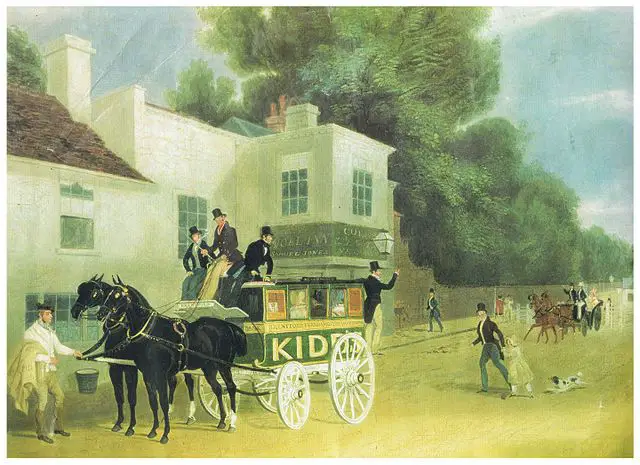
I shudder at that child that was me, because I’ve seen that same switching-off countless times myself as a parent of my own children. They ask a question, and all they want to know is the quick answer. But as parents, you know it’s your duty to tell them everything you know, because they ned to know as much as possible. They’re children. One day they’ll be out in the big bad world, and the only thing you can give them to protect them is as much information as possible.
Surprised by remembering things they had told me
Children just don’t get it. Of course they don’t, that’s because they’re still children. The big bad world is something they have to find out for themselves. It’s a quandary every teacher and parent has known intimately since time and talking began. I thought I had completely switched off my ears with my attention when I was a child, all those times when they started droning. But when I started venturing out into that real world, I was often surprised by remembering things they had told me.

Perhaps you hear your parents, even when you’re not listening. Maybe it’s part of our programming. Of course, I never told them this, because I didn’t want to lose face, but I think they knew. I wonder if my own children ever have that experience, but they’ll probably never tell me either way. The parent-child thing doesn’t work that way. It’s another of life’s frustrating mysteries. A parent’s gotta do what a parent’s gotta do, and a child’s gotta do what a child’s gotta do.
I’m just glad of any attention at all
And isn’t it frustrating when they listen rapt to every word their grandparents say, while we, the parents of the children, roll our eyes at our own parents, doing that same thing they used to do when we were children? As my dad’s bumper sticker said – “If I’d known how much fun grandchildren could be, I’d have had them first!” At my stage in life, I’m just glad of any attention at all.
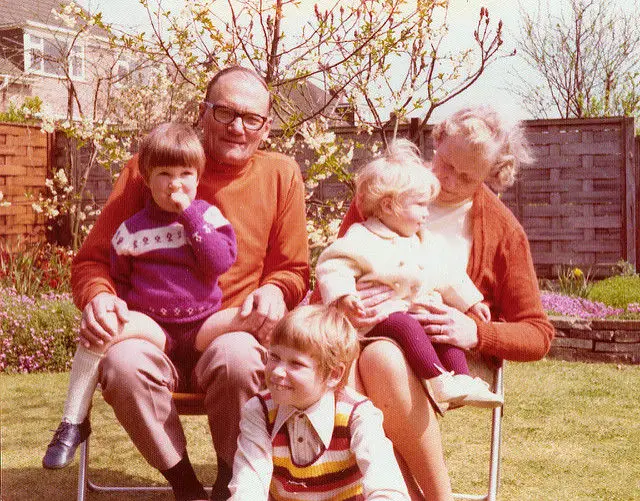
Nowadays we don’t pay any attention to milestones, and probably not much to road signs at all, because our satnav is telling us where to go, and soon the car will just take us, without any dangerous and unnecessary intervention from any imperfect human attempts to travel safely by doing such a thing as driving. I’m looking forward to that very much. Not, you understand, because I don’t love driving and have an admirable safety record – much, as I imagine as yours is too – but because of all those other drivers who behave so badly behind the wheel.
I never understood why we didn’t do that
I remember when the Swedes, who built that marvellous Saab, decided they should stop driving on the left and swapped over, overnight, back in 1967, all of fifty years ago. They had painted all the new lines on all the roads, and erected the new signs on the other side, long before, and on the day armies of people took off the covers and put them over the old signs instead. For years they had been building their cars with left-hand drive in preparation too. I never understood why we didn’t do that.
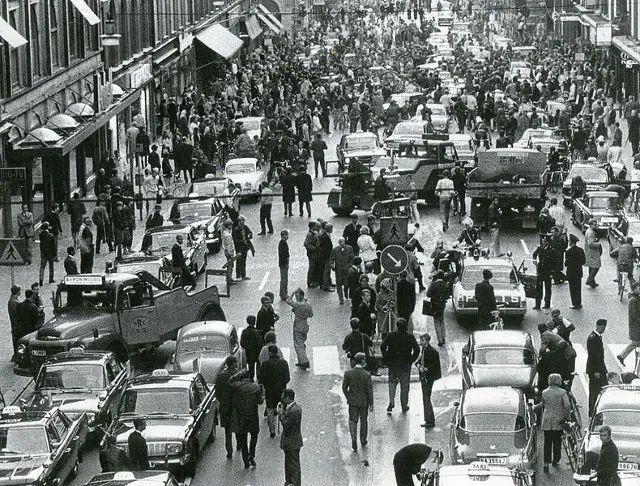
Imagine my surprise back in 1971 when we changed over to decimalisation. Schools had been teaching new money and measurements for ages, and packaging was prepared, and measurements changed in scientific and engineering works and drawings too. I remember market traders being taken to court for selling carrots in pounds and ounces. But I couldn’t work out why all the road signs still gave the distance in miles. Cars showed kilometres as well as miles on their odometers for years.
Why were we so half-hearted about it?
I thought for a while that the makers and maintainers of road signs would replace them gradually, first with signs that gave both miles and kilometres, and then in kilometres only, but it never happened. I never understood why. I imagine all road signs have been replaced since 1971 anyway, and it could have been done at no extra cost. Why were we so half-hearted about it? We hadn’t even joined the European Union then. We didn’t need to do it at all. So if it was important enough, why didn’t we do it properly?
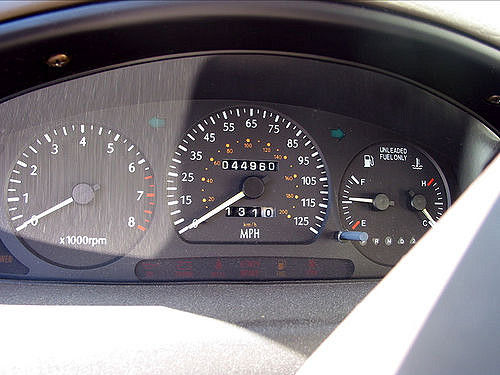
I suspect it was that traditional British thing of pandering to the shouty minorities, and giving way to the old cry of “we’re British, and we do things our old way!” Nowadays, I could probably spin a good conspiracy theory for the idea that we were always going to leave again, so there wasn’t any point. I am wondering how hard these shouty minorities will actually push for a return to good old British feet and inches, and miles, and pints, and pounds, shillings and pence.
I’m not even sure how to write it
We do still have miles and pints, of course, and nobody looks at you weirdly if you tell them you’re “six foot tall”. In fact, they look at you weirdly if you say you’re “1 metre 80”. The whole “1 metre 80” thing is actually so weird to us Brits 50 years since decimalisation, that I’m not even sure how to write it. Should it be “1.80”? Or “One metre, eighty centimetres”? I have no idea. Let’s just go back to feet and inches. That’s proper measuring. Perhaps my conspiracy theory is not so weird after all. We shall see what happens in due course, of course.
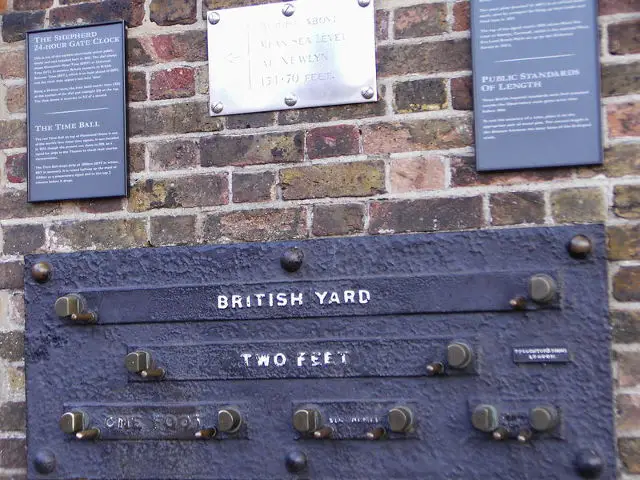
All of this makes me think about the nature of signs, and measurements. It’s all arbitrary. Feet at least correspond to someone’s actual foot, although all our feet are as different as we are. Cubits, those measurements used in the building of the Ark (of Noah, not of the Covenant, apparently), are the distance between the elbow and the end of the middle finger. Inches are the length of the last part of your thumb, the bit with the nail in. Rods and perches and furlongs and poles and other weird things we used to use to measure have similar origins, and would always have been useful until B & Q started selling tape measures for £1.
Let’s call it off. The whole thing
In contrast, a metre is supposed to be one ten-millionth of the distance from the Equator to the North Pole. This is mathematical. It’s scientific. Of course, this is also not precise enough. It has now been redefined as the distance travelled by light in a vacuum in 1/299792458 of a second. No wonder we Brits are sceptical about the whole thing. Let’s call it off. The whole thing.

I once heard a good story. I’m sure it’s entirely apocryphal, but I like it whether or not it’s true. If you know it isn’t, please just think of it as a parable. It goes like this. A few decades ago, the British and the French decided to build a passenger jet. We said we’d build the wings, and the French agreed to build the cabin. Entirely accurate plans were drawn up for the design of everything, in millimetres.
A certain emotional response about national stereotypes
The story goes that the French, looking at the place where the wings would bolt to the fuselage, thought that the British would have converted every measurement to feet and inches, and then back again, which would result in a minute but significant difference in the accuracy of the fitting. So they converted to feet and inches and back when they placed the holes for the bolts, or whatever they used to stick the two parts together. In the story, they were very pleased with themselves.
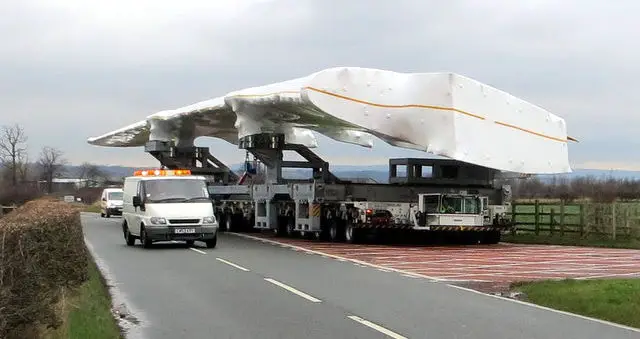
When the wings arrived in France, they didn’t fit together, and after a lot of arguing and shouting, measurements were again taken, and it was discovered that the British worked entirely in millimetres throughout, so the French were doubly wrong-footed, and a redesign had to be put in place. Everyone laughed a lot at this, because it seemed to satisfy a certain emotional response about national stereotypes, but I just wondered if any of these so-called engineers had ever heard of the telephone?
Those milestones are telling the truth
So in one way, those milestones are telling the truth, in the same way as the satnav does, and the road signs, and the measurements, and even our parents, but we either aren’t looking or listening, or the information they’re giving us seems uninteresting or irrelevant.
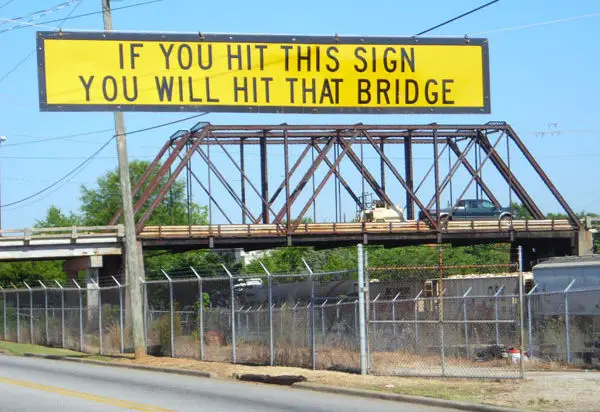
It does go to show – you can put up a sign, but it doesn’t mean anyone will read it or take notice.
If you have been, thank you for reading this.
Image: Nigel Smith
Image: Public Domain
Image: Pixabay under CC BY 2.0
Image: foilman under CC BY 2.0
Image: Jacob Forsell under CC BY 2.0
Image: Odometer under CC BY 2.0
Image: Zlatko Krastev under CC BY 2.0
Image: Ken Eckert under CC BY 2.0
Image: John S Turner under CC BY 2.0
Image: josephleenovak under CC BY 2.0

